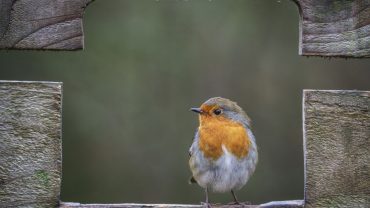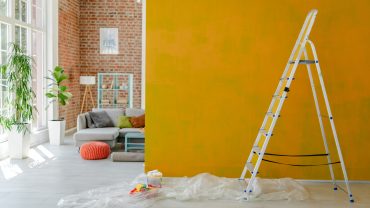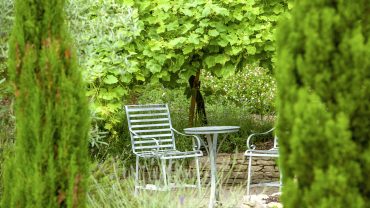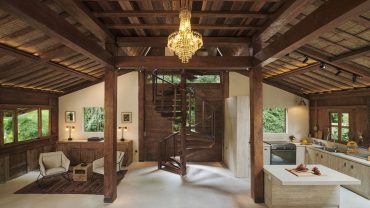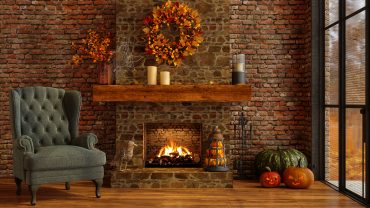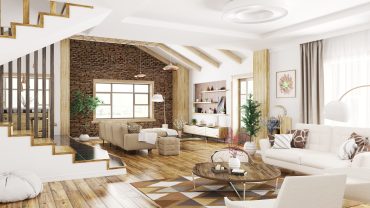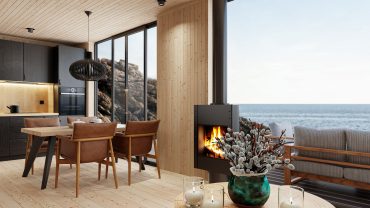The early 17th century in England was a period of change and transformation, both politically and culturally. In 1603, the country gained a new monarch in James I and, with him, a shift from the Tudors to the Stuarts. At the same time, a new aesthetic began to flourish; one that would come to be known as the Jacobean era, the name derived from Jacobus, the Latin version of James.
Along with its architectural form, Jacobean interior design emerged as a transitional style between medieval and more modern features and themes, blending Renaissance influences with Gothic and classical touches. But what exactly defines Jacobean style interiors, and how did this movement reflect the shifting landscape of its time? Delve into the opulent world of Jacobean decor to uncover its rich history and enduring legacy.
The Jacobean Style Emerges

Stunning Jacobean-style staircase (Credit: Luke Thompson via Getty Images)
Jacobean interior design originated in the early 17th century, a period of significant transformation in England. Perhaps chief among these was the ascension of the Stuart dynasty, with James I taking the throne, heralding a new era that coincided with the emergence of Jacobean style interiors.
Rather than a radical departure from previous styles, Jacobean house decor brought together numerous existing forms, combining them with new ideals. So, Renaissance motifs were blended with Gothic elements like vault forms, while Tudor features such as wood panelling and four-centred arches were incorporated alongside classical ornamentation like pilasters and scrolls.
Meanwhile, Jacobean decor also mirrored the fashions of the time, particularly the love of extravagance. Thus, everything became bolder and more opulent. The concepts of comfort and practicality, which had never before taken precedence, also gained importance during this era. The result was an interior style that was both grand and liveable, reflecting the complexities of the time.
Key Characteristics of Jacobean Interiors

Opulent Jacobean-style fabric featuring the Tree of Life (Credit: L_Kramer via Getty Images)
Jacobean interiors were distinctive in their attention to detail, use of grand materials, and emphasis on robust, long-lasting furniture. From intricate woodwork to opulent fabrics, every element played a part in creating an atmosphere of luxury and status.
Functional Furniture: The Heart of Jacobean Decor
At the core of Jacobean interior design was its furniture. Often made from solid oak, the furniture was designed to make a statement and stand the test of time. Intricately carved chairs, tables, and cabinets were commonplace, with high-backed chairs becoming a central feature of Jacobean house decor. Furniture often featured turned legs with spiral or bulbous shapes, and decorative carvings – such as floral motifs and heraldic symbols – further emphasised the homeowner’s wealth.
Deep & Dramatic Colours
Jacobean interiors were characterised by a dramatic colour palette, reflecting the grandeur of the style. Rich, deep tones like burgundy, dark brown, and deep red were used extensively in fabrics and wallcoverings, creating a sense of warmth and intimacy. These dark hues were often offset by the use of gold accents, which added a touch of luxury and highlighted the intricate detailing found in the furniture and architectural elements. The heavy use of oak, a central material in Jacobean interiors, contributed to the dominance of dark brown tones throughout the space. However, these darker elements were balanced with lighter fabrics and tapestries, preventing the rooms from feeling overly sombre.
Sumptuous Fabrics in Jacobean Interiors
Rich, opulent textiles were a vital element of Jacobean interiors. Homes were draped in luxurious fabrics such as velvet, silk, and brocade, often adorned with intricate embroidery. These textiles were used in upholstery, wall hangings, and curtains, adding layers of texture and warmth to the space. The patterns found in Jacobean textiles were often elaborate, featuring detailed floral designs and historical themes. Tapestries, in particular, became a prominent feature in Jacobean decor, serving both aesthetic and functional purposes by providing insulation as well as decoration.
Decorative Elements: Crafted to Impress
No detail was too small in Jacobean decor, with every surface an opportunity for elaborate ornamentation. Fireplaces, for example, often served as the focal point of the room and were adorned with carved mantels that reflected the rich detailing found throughout the house. Ceilings, too, featured exposed wooden beams or plasterwork in geometric patterns, adding visual interest and depth to the room. Windows in Jacobean interiors were typically leaded glass with small panes, sometimes enhanced with stained glass for added colour. These windows provided natural light while still maintaining the sense of grandeur central to the style.
Jacobean Motifs: A Love for Detail
One of the defining features of Jacobean interior design is its use of decorative motifs, drawn from a mix of classical and medieval influences. Tapestries and textiles were often adorned with intricate, flowing floral designs, while carvings in wood or stone depicted a variety of themes, from botanical elements to maritime scenes.
Ornamentation
Classical ornamentation, such as pilasters, scrolls, and strapwork, frequently appeared in Jacobean interiors, adding a sense of formality and grandeur. The Tree of Life, a fanciful and iconic Jacobean motif, frequently appeared in tapestries and furniture, representing the era’s love for exaggerated natural forms. Mythical creatures and animals, both real and imagined, were also common themes, often woven into the designs of textiles or carved into furniture. Geometric patterns, particularly in woodwork, further enhanced the detailed craftsmanship that defined Jacobean decor.
The Legacy of Jacobean Design

Opulent Jacobean interior of Holland House in London (Credit: duncan1890 via Getty Images)
In conclusion, Jacobean interior design bridged the gap between the Renaissance and early Baroque styles. Its use of dark woods, richly embroidered textiles, and grand, imposing furniture became enduring features in subsequent styles such as the Georgian and Victorian periods. While the heavy, formal atmosphere of Jacobean interiors has softened in modern interpretations, the influence of its key characteristics, such as attention to detail, use of fine materials, and integration of classical motifs, remains evident in traditional and historic interior design today.

